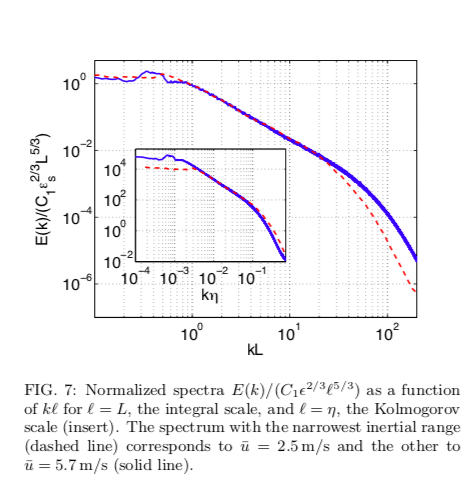Léonie Canet, Vincent Rossetto
 courtesy N.M. AJP publication
courtesy N.M. AJP publication
Abstract :
The Navier-Stokes equations remain unsolved to this day, and predicting the statistical properties of turbulent flows is a major challenge for many applications. Numerous theoretical approaches have been developed to both model and compute the behaviour of turbulent flows beyond the 1941 Kolmogorov theory. This course will present several of these approaches, from the multi-fractal formalism to the renormalization group methods, focusing on the ideal case of isotropic homogeneous turbulence.
Distribution CM/TD:
approximately 12 CM (18h) and 4 TD (6h) taught mainly in french
Contents (indicative) :
PART A - advanced phenomenology of turbulence
- Experimental and numerical observations of intermittency: manifestations of intermittency, universal properties, main deviations from the predictions of the Kolmogorov 1941 theory
- The multi-fractal formalism: reminder of fractals, scale invariance, need to account for multi-scale character, Kolmogorov 62 theory, multi-fractal models.
PART B - statistical description of turbulence
- Spontaneous stochasticity: notion of spontaneous stochasticity for an ordinary differential equation, spontaneous stochasticity in simplified models of turbulence, justification of statistical approaches
- Some simplified models of turbulence: Lorenz model and strange attractor, layered models, Burgers equation
- The renormalization group: Field theory for Navier-Stokes, symmetries, Karman-Howarth from symmetries, Wilson's renormalisation group.